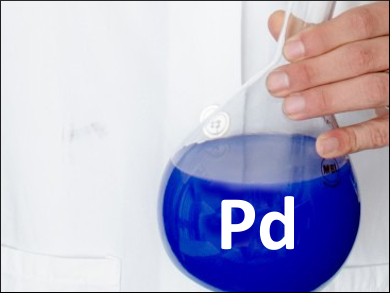Noble metal nanoparticles are highly active catalysts. However, they are costly and methods to reuse and recycle them are helpful. Immobilizing the particles on a support substrate is one approach to simplify catalyst separation, but can still require workup before reusing the catalyst.
Xiang Fei, National University of Singapore and University of Zurich, Switzerland, and colleagues have developed an immobilized, recycling-free, reusable palladium nanoparticle catalyst system which can be applied to the inside walls of a glassware reactor. The team first deposited silicone nanofilaments (SNFs) on the glass using an H3CSiCl3 precursor. The filaments’ surface was then activated using an O2 plasma to create hydroxyl groups, and coated with polydopamine (PDA). The functionalized fibers were then immersed in a solution of K2PdCl4, which is reduced to palladium nanoparticles by the catechol functional groups of PDA. The nanoparticles bind strongly to the modified SNF surface.
The researchers tested the catalyst system in a Heck coupling reaction and found high activity and selectivity, which outperformed a traditional Pd/C catalyst. The nanocatalyst could be simply reused after washing the coated reactor with ethyl acetate and ethanol. A yield of 90 % was maintained even after 20 reuse cycles. According to the team, the approach could be extended to other noble metals.
- A Recycling-Free Nanocatalyst System: The Stabilization of In Situ-Reduced Noble Metal Nanoparticles on Silicone Nanofilaments via a Mussel-Inspired Approach,
Xiang Fei, Wangqing Kong, Xin Chen, Xuejiao Jiang, Zhengzhong Shao, Jim Yang Lee,
ACS Catal. 2017.
DOI: 10.1021/acscatal.6b03185




